Pickup trucks have long been the backbone of work, adventure, and American automotive identity. Once purely utilitarian machines designed to haul tools and cargo, pickups have evolved into highly engineered machines that can rival luxury sedans in comfort—and in some cases, even outperform sports cars in raw acceleration.
What was once a segment defined by durability and function is now teeming with technological innovation, electric revolutions, and high-horsepower bragging rights. In the modern era, it’s not enough for a pickup to be tough; it also has to be fast.
While speed may not be the most important metric for every buyer, it’s a fascinating one. It reveals just how far the pickup segment has come—and how wide the gap is between its fastest and slowest members.
From supercharged monsters like the Ram 1500 TRX and Ford F-150 Raptor R to underpowered base models of otherwise respectable trucks like the Toyota Tacoma or Chevy Colorado, the spread between quick and sluggish has never been more pronounced.
Some trucks hit 100 mph before others even clear 60. That’s a remarkable performance divide in a class of vehicles built around a similar size and function.
This article takes a deep dive into both ends of that spectrum. On one side, we have the performance kings—trucks designed with cutting-edge engineering and massive horsepower to launch them to triple digits with shocking ease. These trucks aren’t just quick for their size—they’re quick, period.
With zero-to-100-mph times rivaling or surpassing traditional sports cars, they stand as testaments to how versatile and absurdly capable modern pickups have become. Whether they’re using electric propulsion or fire-breathing V8s, these are machines built to thrill.
On the other end, we explore the laggards—trucks that prioritize dependability, affordability, or off-road simplicity over speed. These models are not built for the racetrack, and in some cases, they struggle to even reach 100 mph promptly.
That’s not necessarily a flaw; many of these vehicles are designed with different goals in mind, such as long-term reliability, fuel economy, or fleet utility. However, when viewed through the lens of performance, these pickups reveal the limitations of certain design philosophies that haven’t kept up with the acceleration arms race.
It’s important to remember that performance metrics like 0–100 mph are not the sole indicators of a truck’s value. A vehicle’s ability to tow, traverse rough terrain, and endure harsh work conditions often carries more weight with typical pickup buyers than how fast it can sprint down a straight stretch of pavement.
Still, speed provides a unique lens into how varied the pickup world has become. The same segment that offers 1,000-horsepower electric beasts also still includes four-cylinder models with economy-car output. That kind of diversity doesn’t exist in most other vehicle categories.
This split also highlights how automakers have begun targeting different audiences with increasing precision. Enthusiasts who crave tire-shredding torque and modern tech have more options than ever.
Meanwhile, traditionalists seeking bulletproof durability and basic functionality can still find budget-friendly models that stick to proven formulas. It’s a fascinating contrast—and one that makes today’s pickup landscape more dynamic and compelling than ever.
In the following sections, we’ll explore five pickups that redefine what trucks can do in a straight line, followed by five that lag behind, whether by design or by neglect.
Together, they paint a vivid picture of an industry straddling two worlds: one of performance obsession and the other of pragmatic endurance. Let’s dive in and see what separates the thrill machines from the tortoises of the truck world.
Also Read: 5 Cars With Dependable Infotainment and 5 With Buggy Screens
5 Fastest Pickups from 0–100 MPH
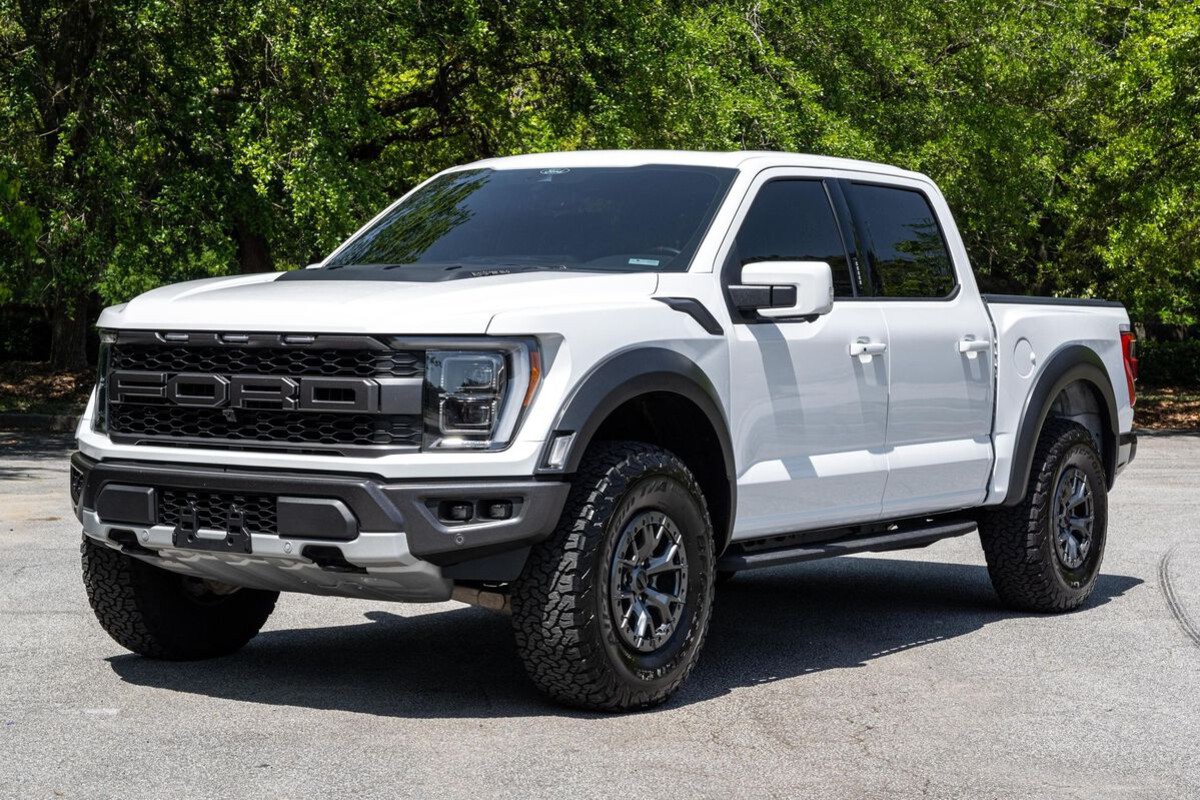
Ford F-150 Raptor R
The Ford F-150 Raptor R is the result of Ford Performance unleashing everything it had in the arsenal to create a truck that not only dominates the dunes and trails but also terrorizes the tarmac. At the heart of the beast is a 5.2-liter supercharged V8 lifted from the Mustang GT500—an engine affectionately known as the “Predator.”
Producing a hair-raising 700 horsepower and 640 lb-ft of torque, this truck rockets from 0 to 60 mph in roughly 3.6 seconds and can hit 100 mph in approximately 8.4 seconds.
That kind of performance in a full-size truck weighing over 5,900 pounds is nothing short of a mechanical miracle. The Raptor R is Ford’s way of saying that off-road monsters can have on-road manners—and a wild side.
Its acceleration isn’t just about brute power. Ford has optimized every element of the drivetrain to deliver speed in a controlled, predictable way. The 10-speed automatic transmission has been recalibrated for aggressive driving, and launch control borrowed from Ford’s Mustang performance playbook ensures minimal wheel hop and maximum traction off the line.
Adaptive Fox Live Valve shocks keep the body under control whether you’re accelerating on pavement or bounding through rocky trails. The Raptor R feels like a supertruck—quick, firm, loud, and deliberate, all while still offering the flexibility of a traditional full-size pickup. It’s equally at home racing across the Mojave as it is roaring down an open highway.
Inside, the Raptor R doesn’t feel like a raw-edged race truck either. Ford has equipped it with premium materials, bolstered Recaro seats, and a tech-laden dash that makes it feel as modern and comfortable as a luxury SUV. Drive modes, including a specialized “Baja Mode,” help adapt throttle mapping, steering, and suspension behavior to different environments.
But even in normal mode, the Raptor R’s throttle is snappy and unforgiving—every stab of the pedal reminds you that this is not a truck to be driven casually. Even daily errands become adrenaline-fueled sprints when you’ve got that much muscle at your command.
The Raptor R represents the most extreme culmination of Ford’s F-Series evolution. What began as a workhorse has morphed into a multi-purpose performance platform capable of outpacing many sports cars.
It’s symbolic of a new era where power and capability go hand-in-hand, and where trucks can be just as thrilling to drive as they are useful. The Raptor R doesn’t just challenge the limits of what a pickup should be—it shatters them.
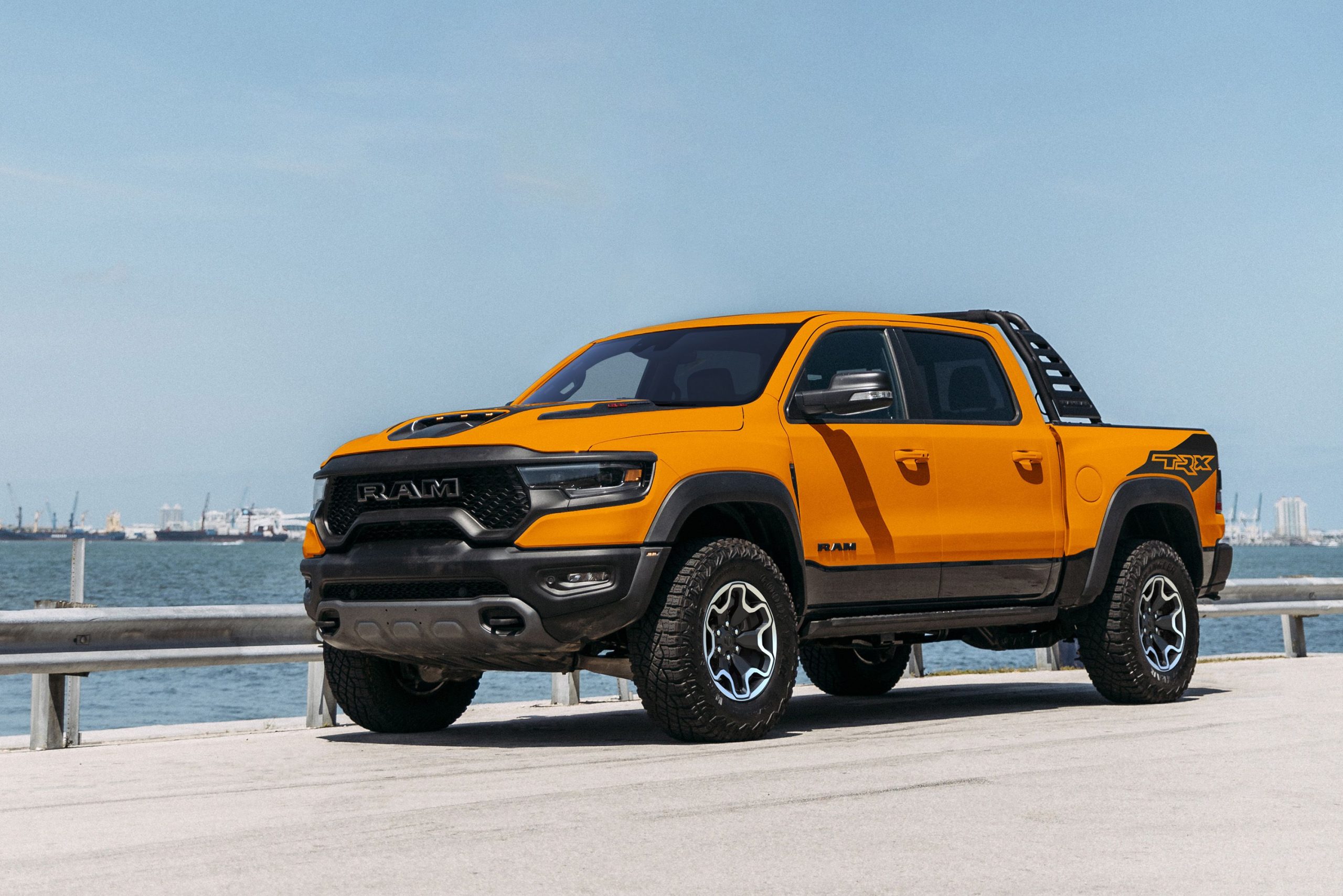
Ram 1500 TRX
The Ram 1500 TRX doesn’t just chase after speed records—it goes for the throat. Introduced as a direct response to the Ford Raptor, the TRX took things even further by borrowing its 6.2-liter supercharged V8—aka the Hellcat engine—from Dodge’s Charger and Challenger lineups. The result?
A staggering 702 horsepower and 650 lb-ft of torque. That immense output hurls the TRX from 0 to 60 mph in around 3.7 seconds, with a 0–100 mph time in the 8.5 to 9-second range depending on conditions. At over 6,300 pounds, it’s one of the heaviest pickups in its class—yet you’d never know it once you’re behind the wheel and flooring it.
Ram didn’t just bolt a muscle car engine into a truck and call it a day. The TRX received a completely overhauled chassis, strengthened axles, and custom Bilstein Black Hawk e2 adaptive shocks. These allow the truck to remain composed even when pushed to its limits, be it a high-speed sprint on a back road or a hard landing after catching air off a dune.
The 8-speed TorqueFlite automatic transmission is also tuned for performance, shifting quickly and precisely to maintain optimal power delivery. And thanks to a full-time 4WD system with multiple selectable modes, the TRX puts all that power to the ground with confidence.
From a driver’s perspective, the TRX feels less like a pickup and more like a grand touring vehicle that just happens to sit on 35-inch tires. It’s refined, responsive, and absurdly fast. The supercharger whine is ever-present under hard acceleration, adding to the visceral driving experience.
It’s loud, unapologetic, and guaranteed to turn heads wherever it goes. Yet it’s also comfortable and surprisingly usable as a daily driver. The interior is outfitted with premium materials, a 12-inch touchscreen, and enough driver-assistance features to make long drives pleasant instead of punishing.
The TRX proves that Ram wasn’t just interested in building a Raptor-fighter—they wanted to dominate the conversation. And in many ways, they have.
It’s a supercharged sledgehammer of a truck that still manages to offer all the creature comforts of a luxury SUV. In an age where performance vehicles are increasingly moving toward electric drivetrains and silent speed, the TRX roars like a dinosaur—and that’s exactly the point.
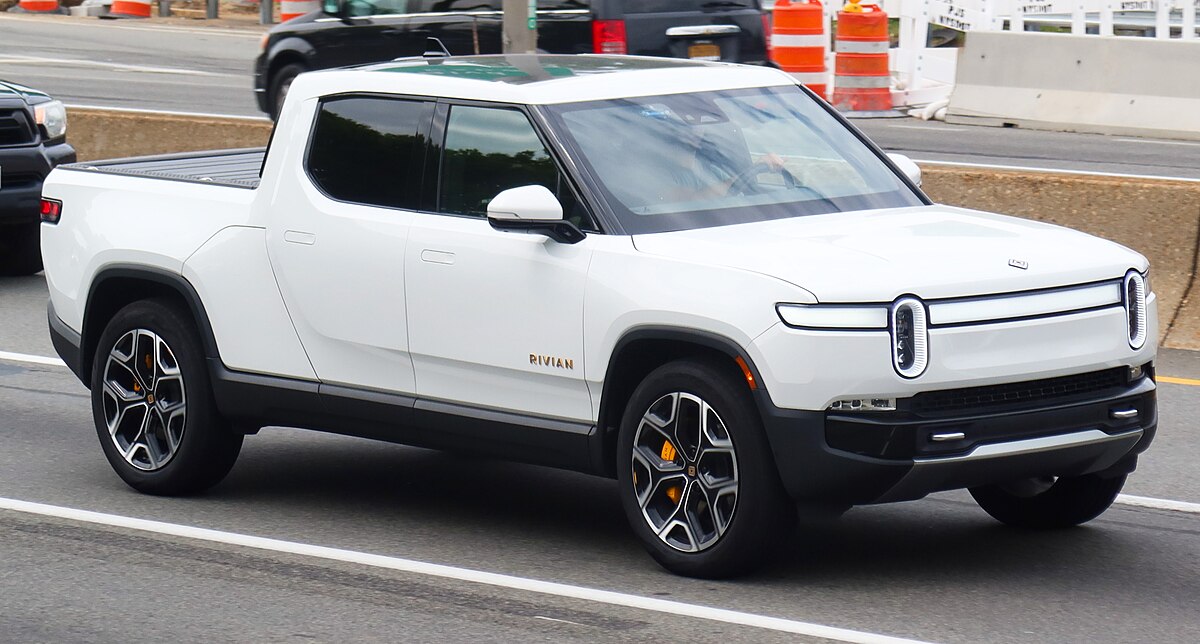
Rivian R1T
The Rivian R1T is not just a high-performance pickup—it’s a manifesto on the future of utility and speed. As the first electric pickup to reach customers in significant numbers, it had a lot to prove.
Thankfully, it delivered—and then some. With four electric motors (one at each wheel), the R1T produces over 800 horsepower and nearly 900 lb-ft of torque in its most powerful configuration.
These aren’t just numbers on a spec sheet; they translate into jaw-dropping real-world performance. The R1T rockets from 0 to 60 mph in as little as 3.0 seconds and can hit 100 mph in under 8 seconds, making it the fastest production truck ever built in terms of both consistency and repeatability.
The brilliance of the R1T lies in its instantaneous torque. Unlike internal combustion engines, which require revving and gear changes, the electric motors deliver peak torque the moment you press the accelerator. This makes acceleration feel not just fast but seamless and eerily smooth.
There’s no delay, no gear hunting, just immediate forward thrust that builds like a tidal wave. And because each wheel has its own motor, the R1T can manage traction with surgical precision, distributing power dynamically depending on surface conditions.
But Rivian didn’t stop at raw speed. The R1T also includes an adjustable air suspension system, regenerative braking, multiple drive modes (including “Drift” and “Rock Crawl”), and a wading depth of over three feet. It’s built not only for drag-strip glory but for true adventure travel.
The interior is clean and modern, with sustainably sourced materials, a massive central touchscreen, and a clever gear tunnel that opens up new storage possibilities. It’s both a high-tech machine and a luxury vehicle, bridging the gap between ruggedness and refinement in a way no other truck has yet managed.
Perhaps most importantly, the R1T represents a seismic shift in what people expect from pickups. It’s proof that electric power doesn’t have to mean compromise—it can mean dominance.
While traditional performance trucks still rely on fire-breathing V8s and aggressive styling, the R1T brings a quiet storm: stealthy, unstoppable, and stunningly fast. It’s a wake-up call to the entire industry that the future is not only coming—it’s already faster.
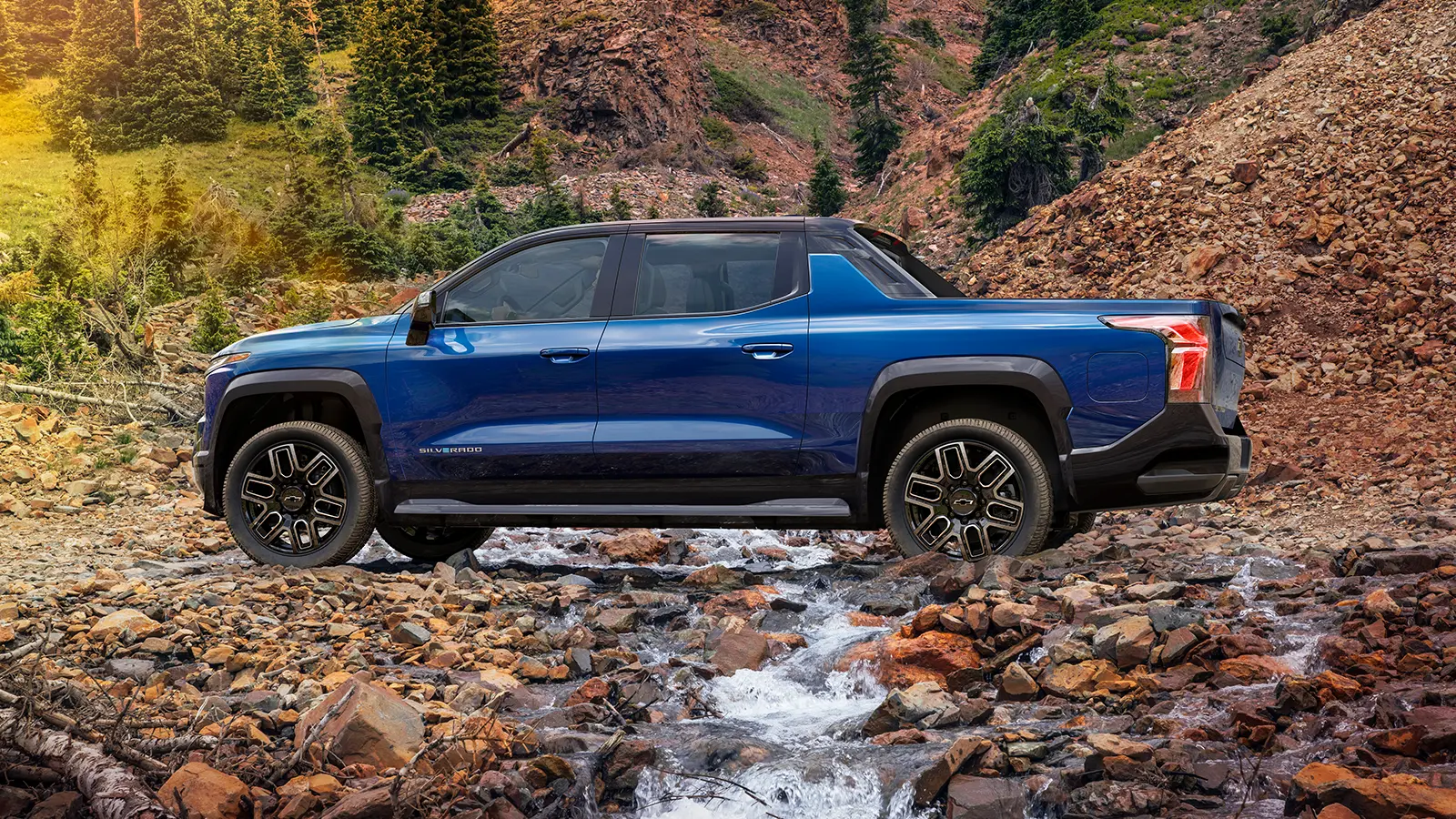
Chevrolet Silverado EV
The Chevrolet Silverado EV is GM’s bold declaration that electric trucks can do it all—haul, tow, go off-road, and sprint like sports cars. Built on GM’s Ultium electric platform (the same used for the Hummer EV and Cadillac Lyriq), the Silverado EV comes with up to 754 horsepower and 785 lb-ft of torque in its performance-oriented RST First Edition trim.
While its 0–60 mph time is a solid 4.5 seconds, what really stands out is its ability to keep pulling, reaching 100 mph in less than 9.5 seconds. For a full-size truck that still looks and feels like a Silverado, those are astonishing numbers.
Acceleration in the Silverado EV feels linear and confident. It doesn’t deliver the same instantaneous jolt as the quad-motor Rivian R1T, but once it’s moving, the power builds rapidly. The low center of gravity, thanks to the massive battery pack mounted under the floor, helps it stay planted even under hard acceleration.
Cornering, lane changes, and braking all feel more stable than in any ICE Silverado variant. GM has put considerable effort into ensuring that the Silverado EV doesn’t just go fast—it handles like a much smaller vehicle.
Beyond speed, the Silverado EV packs serious capability. With up to 10,000 pounds of towing capacity and over 400 miles of range, it’s as practical as it is potent. Four-wheel steering, including the option to “crab walk” like its Hummer sibling, makes it incredibly maneuverable despite its size.
Inside, it offers a spacious cabin, a massive 17-inch infotainment screen, and a layout that’s part work truck, part luxury cruiser. There’s even a midgate feature that allows longer items to extend into the cab—something no traditional Silverado ever offered.
The Silverado EV isn’t just an electric novelty—it’s a serious contender that’s likely to reshape expectations for future GM trucks. It balances practicality, power, and modern tech in a package that feels familiar yet groundbreaking. In terms of acceleration, it may not be the absolute fastest, but it’s one of the most well-rounded performance trucks to ever wear a bowtie.
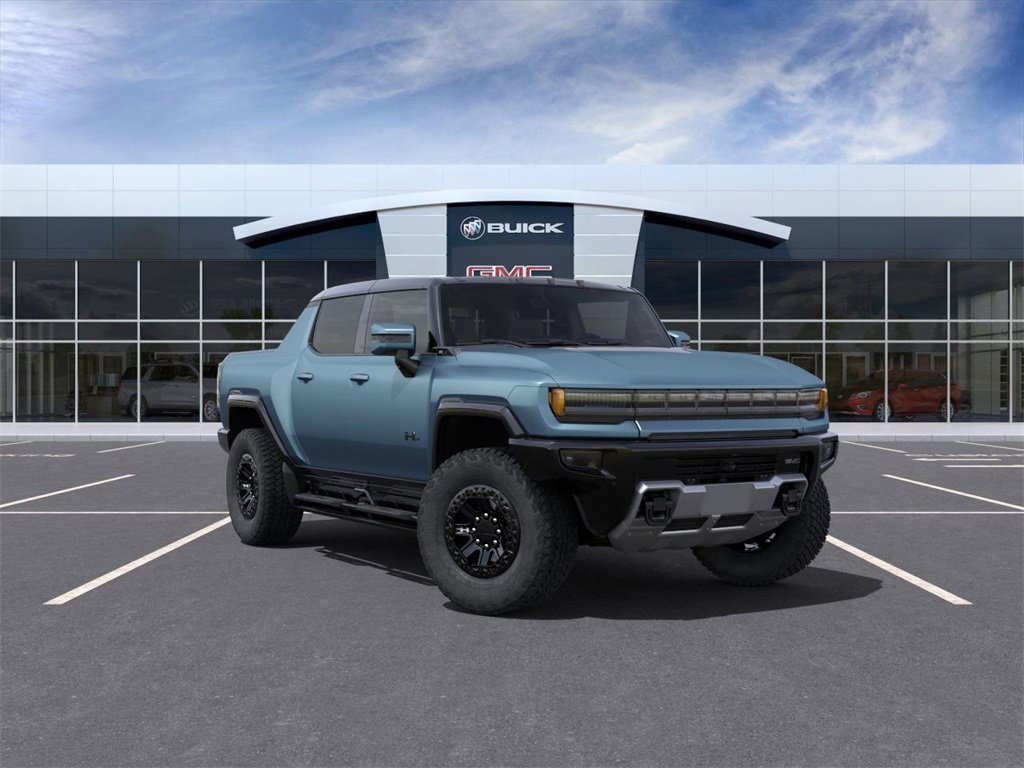
GMC Hummer EV Pickup
The GMC Hummer EV Pickup is less of a vehicle and more of a rolling showcase of everything that’s possible in automotive engineering today.
With a mind-boggling 1,000 horsepower and 1,200 lb-ft of torque (available in “Watts to Freedom” mode), this behemoth defies its 9,000-pound curb weight to deliver a 0–60 mph time of around 3 seconds and a 0–100 mph sprint in roughly 8.5–9 seconds. These aren’t theoretical numbers either—they’ve been tested and verified.
That makes the Hummer EV not only the heaviest production truck to ever hit those speeds but also one of the most outrageous vehicles ever put on sale.
Acceleration in the Hummer EV is more of an event than a statistic. “Watts to Freedom” mode initiates a whole sequence involving haptic seat pulses, sound effects, and pre-conditioning the battery for optimal power.
Once launched, the truck surges forward with brute force, flattening your torso into the seatback and making every passenger question their understanding of physics. The feeling is closer to a rocket launch than a vehicle launch, and it’s shockingly repeatable thanks to GM’s clever cooling systems and drive management software.
Despite its mass and power, the Hummer EV is surprisingly agile. Thanks to its four-wheel steering, it can perform tight turns and “crab walk” diagonally, making it feel much smaller in urban environments or off-road trails.
The adjustable air suspension lifts and lowers depending on terrain or drive mode, further helping manage weight transfer during aggressive driving. Off-road, the Hummer is fully capable of crawling through boulder fields or traversing deep water—yet on the highway, it accelerates like a muscle car.
The Hummer EV Pickup is a monument to excess, but also a testament to what’s possible when engineers are given a blank check and total creative freedom. It’s not cheap, nor is it practical for everyone, but it’s undeniably one of the most powerful and quickest trucks on the planet. It doesn’t just perform—it astonishes.
5 Pickups That Lag from 0–100 MPH
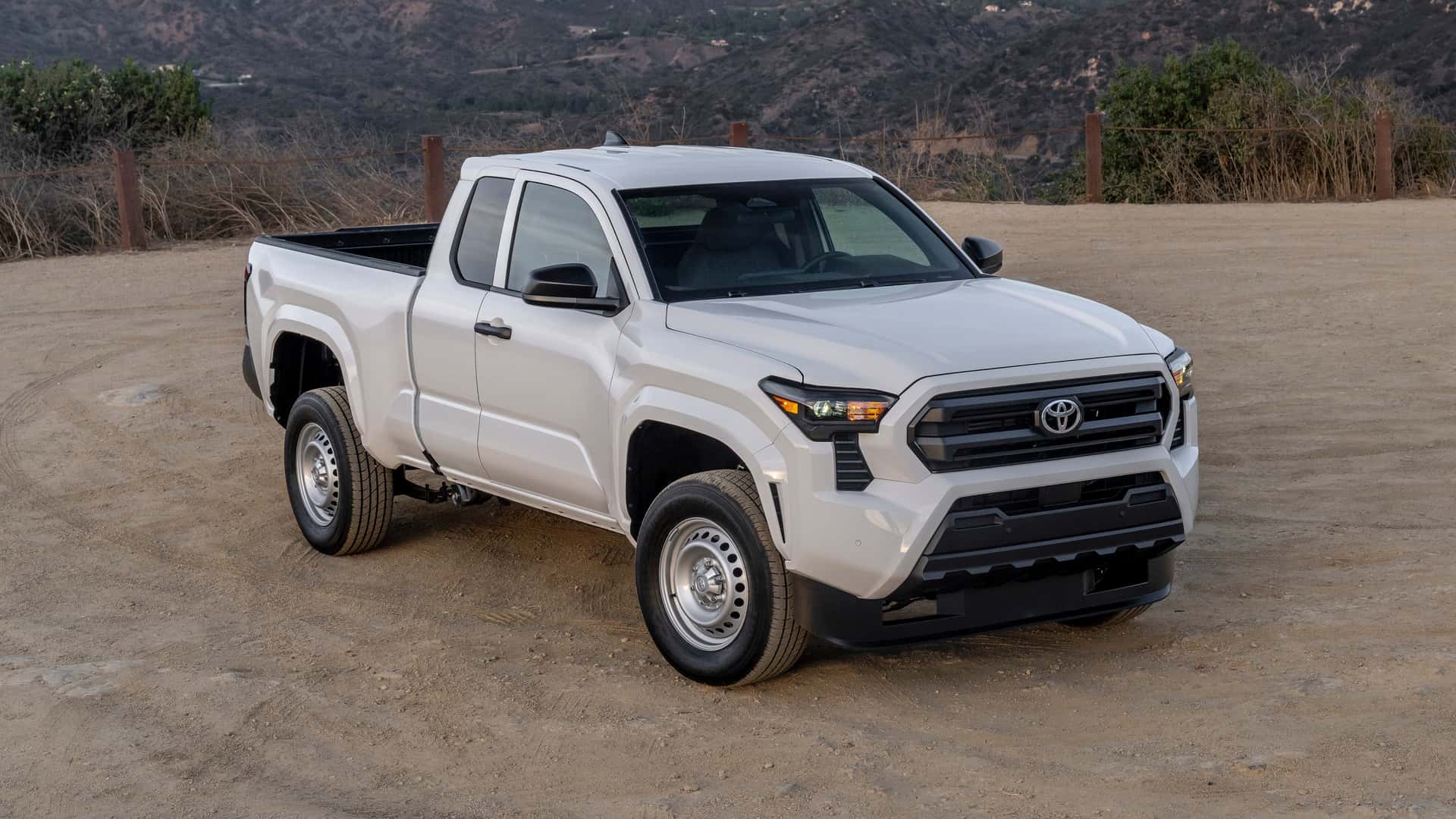
Toyota Tacoma (4-Cylinder Base Model)
The Toyota Tacoma is a beloved nameplate, revered for its rock-solid reliability and off-road heritage. However, its base 2.7-liter 4-cylinder engine makes it one of the slowest pickups in the modern market. Producing just 159 horsepower and 180 lb-ft of torque, this engine simply isn’t built for quickness.
The 0–60 mph sprint takes around 10.5 to 11 seconds, and reaching 100 mph can feel like an eternity—if you can get there at all. For a vehicle designed for durability and moderate utility, this isn’t necessarily a problem. But in a world where even base sedans can be quick, it does feel glaring.
The slow acceleration isn’t just about engine output—it’s also about how the power is delivered. The 6-speed automatic transmission tends to shift early and is tuned more for fuel economy than responsiveness.
This makes merging onto highways or overtaking vehicles a nerve-wracking affair, especially when the bed is loaded or you’re towing even modest weight. In daily driving, it can feel sluggish and unmotivated. There’s a noticeable delay between throttle input and meaningful response, and the engine often sounds strained when pushed.
Yet, despite its leisurely pace, the base Tacoma remains a solid choice for buyers who value long-term reliability over immediate thrills. The naturally aspirated engine is simple, durable, and proven over decades.
It’s easy to maintain, forgiving under abuse, and efficient when driven conservatively. For many fleet buyers, contractors, and off-road enthusiasts who prioritize ruggedness over speed, the trade-off is entirely acceptable. Toyota’s reputation for bulletproof engineering means these trucks often outlast faster competitors.
Still, from a performance standpoint, the base Tacoma lags significantly behind even mid-tier competitors. For buyers seeking a balance of speed and practicality, it’s worth considering the V6 variant or waiting for Toyota’s newer turbocharged options. But as it stands, the 4-cylinder Tacoma remains one of the slowest mainstream pickups on the road—an unapologetic tortoise in a segment increasingly filled with hares.
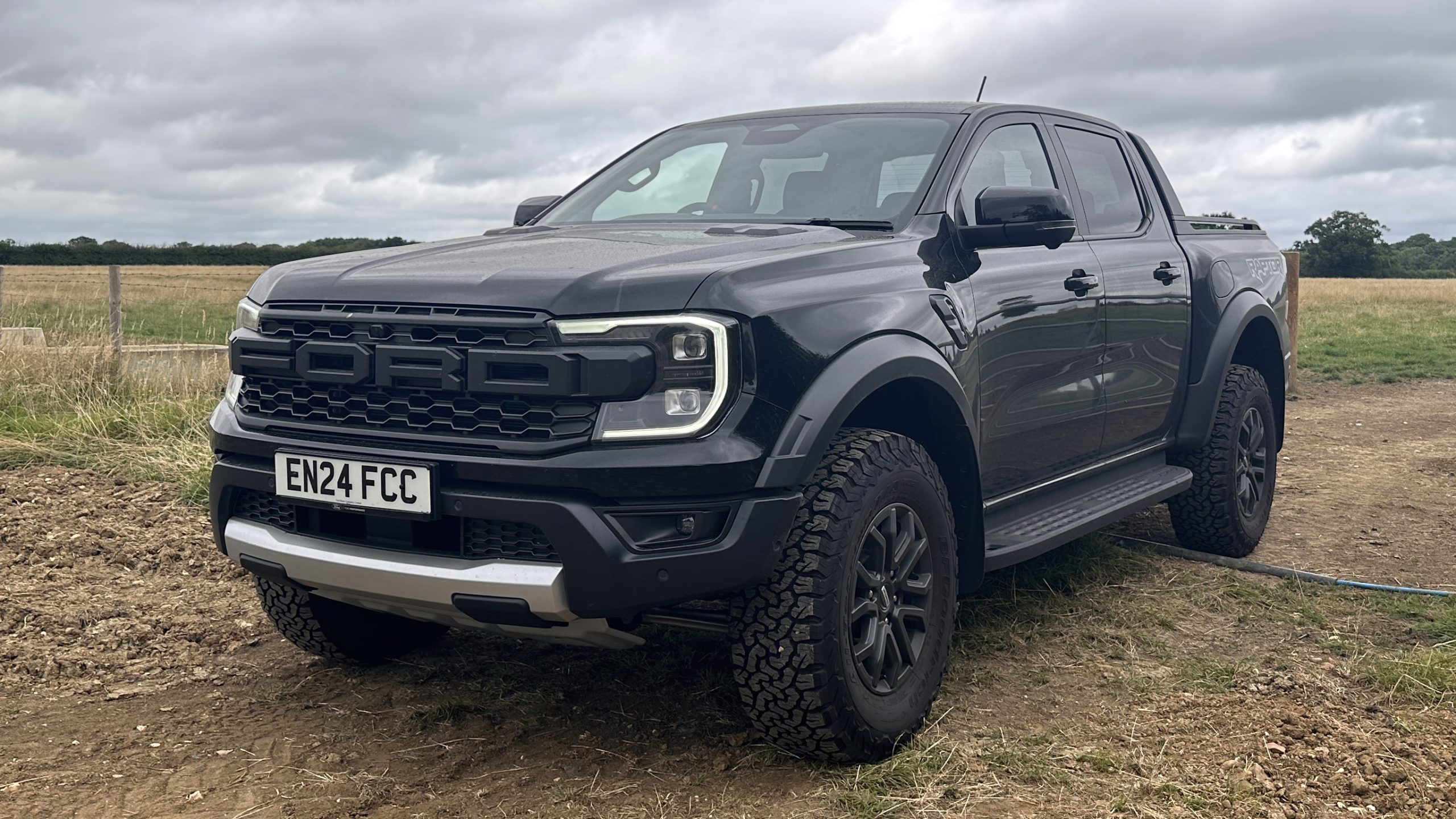
Ford Ranger (Previous Generation – U.S. Spec)
The previous generation Ford Ranger, reintroduced to the U.S. market in 2019, was a welcome return for Blue Oval fans in the midsize segment. Equipped with a 2.3-liter EcoBoost inline-four, it boasted 270 horsepower and 310 lb-ft of torque—on paper, a potent setup.
However, while its 0–60 mph time hovered around 6.8 to 7.2 seconds, its climb to 100 mph was considerably less enthusiastic, often taking well over 18 to 20 seconds depending on road conditions and load. It’s not the slowest truck in a straight line, but its performance curve flattens dramatically after the initial burst.
One reason for this drop-off is the vehicle’s tuning. The EcoBoost engine, while turbocharged and torquey at low RPMs, loses some of its punch as speeds increase. This means you feel a good pull early on, but that momentum tapers off above 60 mph, creating a noticeable lag in highway passing power.
The 10-speed automatic transmission, shared with other Ford vehicles, was sometimes guilty of hunting for the right gear, which disrupted acceleration consistency, especially when trying to build speed quickly for highway merges or overtakes.
Ergonomically, the Ranger wasn’t a disaster, but it felt dated compared to its peers. The interior didn’t inspire confidence in spirited driving, and its soft suspension tuning gave the truck a slight floaty sensation at higher speeds.
This combination of sluggish mid-range acceleration and uninspiring road feel contributed to the perception that the Ranger, while capable, wasn’t a performance-minded pickup. It was better suited to steady commuting, moderate off-road trails, and lighter towing than any kind of aggressive driving.
Ford has addressed many of these issues in its latest generation, improving engine responsiveness and redesigning the platform with a more dynamic feel.
But the outgoing Ranger serves as a reminder that strong specs on paper don’t always translate to real-world quickness, especially when it comes to reaching high-speed milestones like 100 mph. It’s a truck that gets the job done, but not in a hurry.
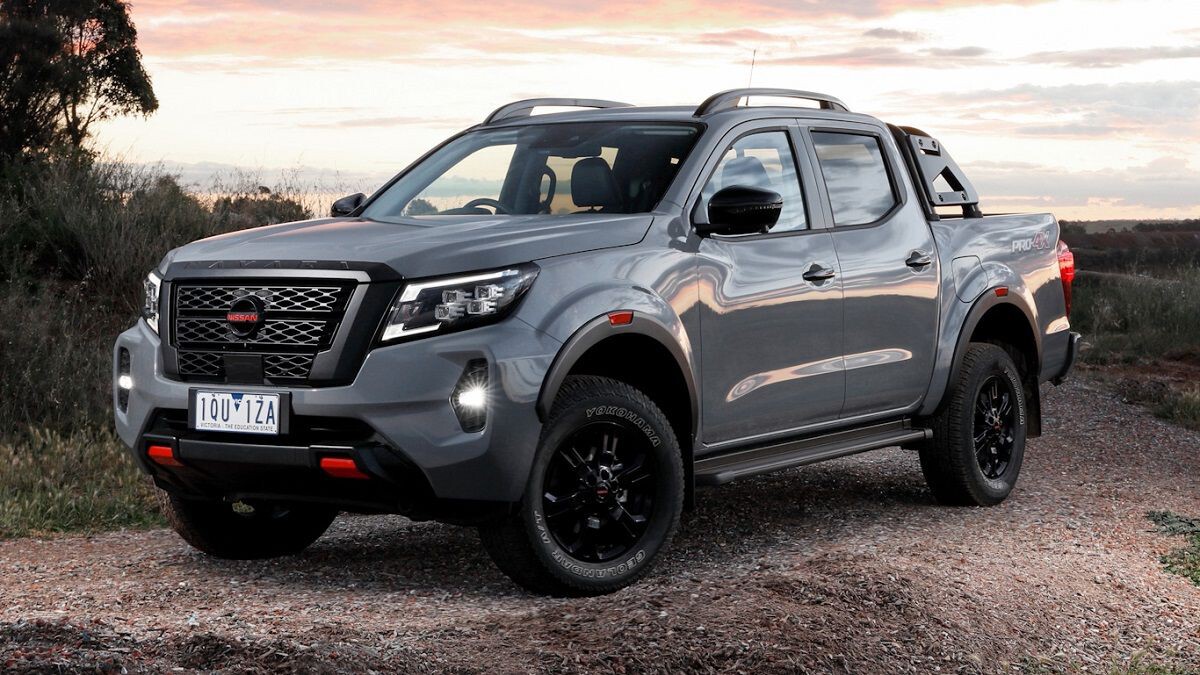
Nissan Frontier (Pre-2022 Model)
The Nissan Frontier, particularly the pre-2022 model that remained largely unchanged for over a decade, was a case study in stagnation. Despite a loyal customer base, the aging platform and dated powertrain left the truck far behind in the performance arena.
The 4.0-liter V6 engine produced 261 horsepower and 281 lb-ft of torque—decent numbers for its time—but the five-speed automatic transmission and clunky drivetrain sapped most of its potential. It managed a 0–60 mph time in the range of 9.0–9.5 seconds, and 0–100 mph often felt like a stretch, easily crossing the 20–25 second mark when loaded or going uphill.
The Frontier’s performance woes weren’t just about speed—it was about the driving experience. The truck felt heavy and sluggish, particularly in passing scenarios. Engine noise was intrusive and not particularly pleasant, and acceleration felt labored rather than spirited.
The five-speed transmission, far behind modern multi-gear units, often hesitated on downshifts and delivered abrupt, slow upshifts. As a result, the Frontier had little finesse and even less urgency—traits that stood out as competitors evolved.
That said, many of these issues stem from Nissan’s decision to leave the Frontier largely untouched for years. Rather than keeping pace with the market, they doubled down on reliability and affordability. This worked for a while—the Frontier sold respectably based on value and simplicity.
Fleet buyers and long-time Nissan fans appreciated the no-nonsense approach. But from a performance standpoint, it simply didn’t compete, and the vehicle became a symbol of how far behind an otherwise competent truck can fall when it’s not regularly updated.
The 2022 redesign finally injected life into the Frontier with a new 3.8-liter V6 and 9-speed automatic transmission, improving both acceleration and refinement.
But the pre-2022 models remain on the road in large numbers, often reminding drivers that, while these trucks could survive anything, they wouldn’t win any races doing it. For those who want sheer performance, the old Frontier is firmly in the rearview mirror.
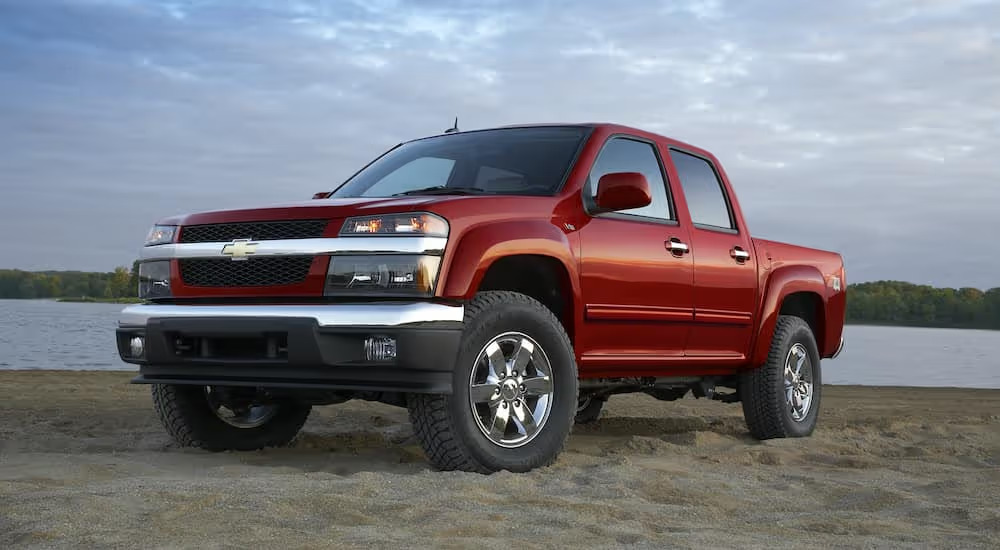
Chevrolet Colorado (2.5L Inline-4 Base Model)
The Chevrolet Colorado is a versatile midsize pickup, and when equipped with the available V6 or Duramax diesel, it becomes a competent, well-rounded machine. However, the base model with a 2.5-liter inline-four engine is a very different story.
Producing just 200 horsepower and 191 lb-ft of torque, it’s among the most underwhelming in its class when it comes to acceleration. With a 0–60 mph time around 9.0–9.5 seconds and a 0–100 mph time pushing well past 20 seconds, it’s clear that this trim isn’t made for speed—it’s made for budgets and basic transportation.
The 6-speed automatic transmission used in this model doesn’t help its case either. Shifts can be sluggish and poorly timed, and the engine feels taxed when trying to maintain highway speeds or climb hills.
Under full throttle, the cabin fills with engine noise that lacks refinement, and acceleration flattens out past 60 mph. The truck simply doesn’t inspire any kind of excitement—it’s a commuter, a work mule, a base-level utility vehicle in every sense of the word.
What makes matters worse is that the performance gap within the Colorado lineup is so wide. Step up to the 3.6-liter V6 with 308 horsepower, and the truck becomes lively and quick enough to challenge some of its competitors.
But in the 2.5-liter variant, everything feels dulled down—acceleration, handling, and overall feedback. It’s a truck built for people who just need a bed and four wheels, not for enthusiasts or those with any desire for spirited driving.
To its credit, the base Colorado is affordable and reasonably fuel-efficient for a midsize pickup. It’s a solid choice for businesses, fleet operators, or anyone who needs a dependable, no-frills truck for light-duty tasks. But if your priorities include highway merging power, overtaking ability, or even just daily responsiveness, this configuration leaves much to be desired. It’s a slow starter—and an even slower finisher.
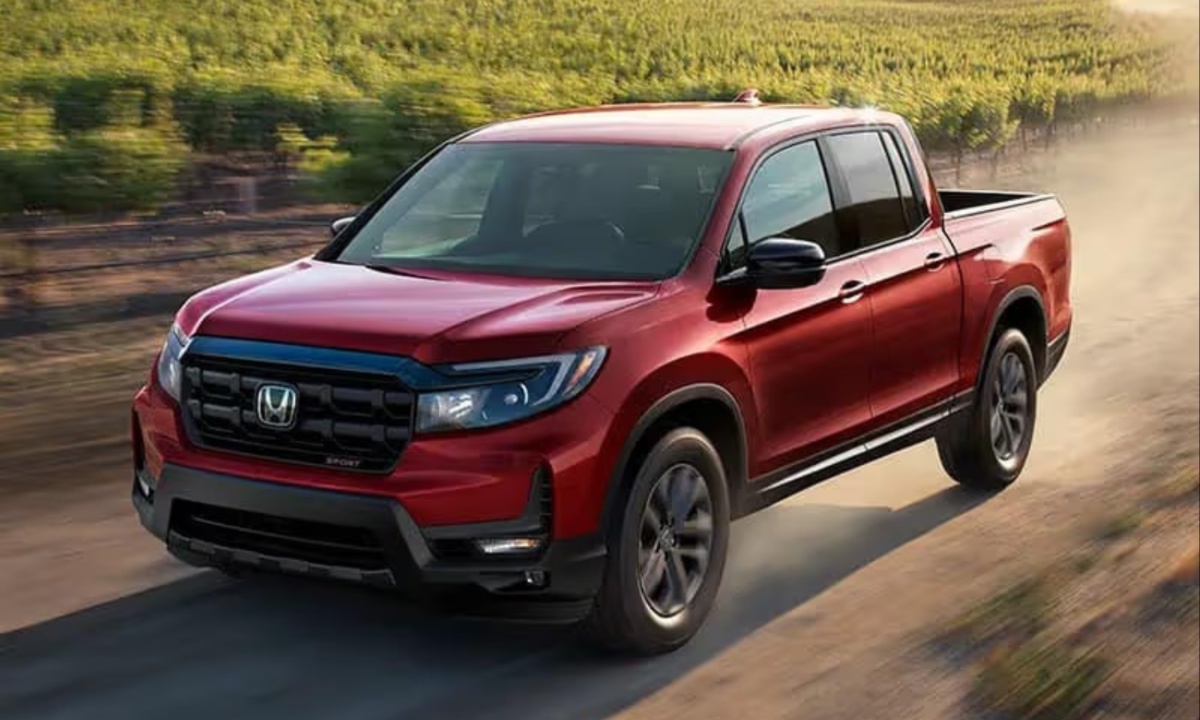
Honda Ridgeline
The Honda Ridgeline has always been the odd one out in the truck world. Built on a unibody platform shared with the Honda Pilot SUV, it’s more crossover than traditional pickup. It prioritizes comfort, ride quality, and clever storage over brute strength or towing prowess.
The Ridgeline’s 3.5-liter V6 puts out 280 horsepower and 262 lb-ft of torque—respectable figures on paper—but in practice, acceleration is relaxed at best. 0–60 mph takes around 7.2 seconds, while the run to 100 mph often creeps past 20–22 seconds, depending on load and elevation.
Part of the issue is the Ridgeline’s personality. It was never intended to be a speed demon, and everything from its soft suspension to its CVT-like nine-speed automatic reflects that.
The engine doesn’t surge with power but builds gradually, and while it’s smooth and composed, it lacks urgency. The AWD system, though excellent for traction and foul weather, doesn’t prioritize aggressive off-the-line launches. As a result, the Ridgeline feels more like a large car with a bed than a proper truck in high-speed scenarios.
On the flip side, the Ridgeline shines in areas many traditional trucks ignore. It has one of the most comfortable and refined rides in the segment, excellent handling, and one of the best interiors in any pickup.
Features like the in-bed trunk and dual-action tailgate offer practicality that no one else replicates. It’s a fantastic lifestyle vehicle for families, urban dwellers, or adventurers who prioritize comfort and tech over speed or raw utility.
Still, from a performance perspective, it’s hard to ignore its underwhelming 0–100 mph numbers. While plenty fast for daily use and well-mannered on road trips, the Ridgeline lacks the muscle to hang with even mid-tier rivals in a straight line.
If your goal is speed or spirited driving, Honda’s pickup may not be the right tool for the job. But if you want a truck that behaves like a premium crossover—with the convenience of a bed—it remains uniquely appealing.
Also Read: 5 Cars With Digital Locks Hackers Cant Bypass and 5 With Weak Encryption
The world of pickup trucks has never been more diverse—or more divisive—when it comes to speed and performance. From blisteringly fast electric titans to slow-and-steady workhorses, the contrast within this segment reveals how drastically different buyers’ needs and priorities have become.
The modern pickup landscape is no longer a uniform category of vehicles designed solely for towing and transporting materials; it’s a battleground of extremes, where speed can be both a selling point and a secondary concern.
The fastest pickups on our list demonstrate what happens when engineers are unleashed to break boundaries. Trucks like the Ford Raptor R, Ram TRX, and Rivian R1T show how far performance capability has come. These aren’t just trucks—they’re hyper-powered platforms built to dominate both pavement and dirt.
They combine high horsepower with advanced drivetrains, intelligent suspension systems, and precision launch control, allowing machines weighing over 6,000 pounds to reach triple-digit speeds in mere seconds. Whether gas-fed or battery-powered, these vehicles stand as marvels of modern engineering—and they make no apologies for their excess.
But these performance pickups also reflect a change in consumer mindset. Buyers are no longer looking solely for function—they want speed, tech, and a thrill factor. In a time when sports cars are becoming more niche and the crossover has taken over family garages, performance pickups fill a unique gap: the ability to be fun, fast, and functional.
You can drive a 700-horsepower truck to the grocery store and then take it to the dunes the next day. That dual-purpose appeal has helped high-performance trucks earn a passionate following, and automakers have responded with increasingly ambitious models.
Conversely, the slowest pickups on our list are reminders that not every truck needs to be—or should be—fast. Models like the Toyota Tacoma 4-cylinder, old-gen Nissan Frontier, and base Chevy Colorado offer simplicity and reliability over thrills. They may struggle to hit 100 mph in any reasonable time frame, but they’re dependable, affordable, and often easier to maintain.
These trucks stick to the basics, offering practical work tools rather than flashy performance metrics. Their slowness is a consequence of their design priorities, and for many buyers, that’s perfectly acceptable.
However, the existence of these laggards also serves as a warning to manufacturers. As the pickup segment continues to evolve and consumer expectations grow, trucks that fail to adapt run the risk of feeling outdated or underwhelming. While performance isn’t everything, modern buyers expect at least a baseline level of responsiveness, particularly when driving on highways or hauling loads.
A truck that feels dangerously slow when merging or overtaking can become a liability, not just an inconvenience. In this way, performance isn’t just about speed—it’s about confidence and control.
The widening gap between the fastest and slowest trucks reflects the pickup market’s fragmentation. On one side, you have futuristic electric monsters and V8-powered beasts with supercar-like acceleration.
On the other hand, rugged, slow, and stubbornly analog machines are designed to take a beating without ever worrying about 0–100 mph figures. This contrast isn’t just fascinating—it’s essential. It means buyers have more choices than ever before, with trucks tailored for just about every lifestyle, budget, and performance appetite.
Ultimately, the beauty of today’s pickup market is its range. Whether you crave neck-snapping speed or bulletproof reliability, there’s a truck out there for you. Some will thrill you with supercharged growls and electric silence; others will loyally serve you mile after mile with no complaints.
What unites them is their shared DNA: a legacy of utility, power, and adaptability. Whether fast or slow, every pickup plays its role in this ever-expanding spectrum—and that’s what makes the segment so uniquely American, and endlessly compelling.
